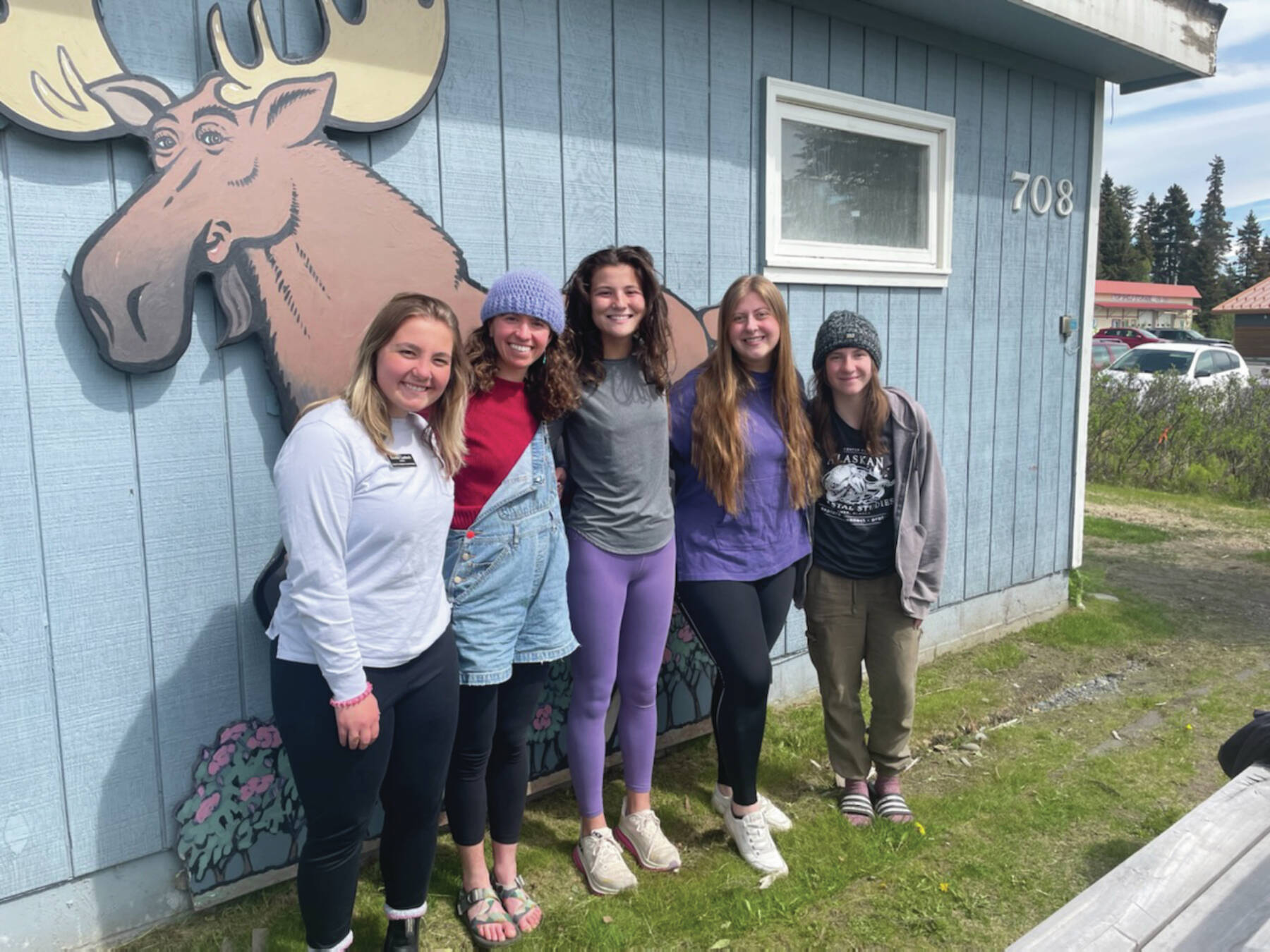In the second week of June, the Center for Alaskan Coastal Studies begins a series of summer programs for youth to explore and adventure in Homer and Kachemak Bay environmental habitats. Camps are available by various age ranges and booking is available online. Camp leader training took place in the final week of May with trainees returning from across Kachemak Bay on Friday, June 2.
Themes in the camps will include marine mammals, ethnobotany, oceanography, tide pool life and sea birds and more features related to Kachemak Bay. Some of the day camps themes also include art and music in nature and wilderness survival.
The two primary camp leaders for CACS are Alexa Helm, who is at the Petersen Bay Field Station now, and Joscie Norris, who is a co-leader with Homer Wilderness Leaders or HoWL
Camp leaders have Wilderness First Responder (WFR) or “woofer” training, as well background in kayak safety and leadership training, mental health, first aid and science training, according to CACS Program Director Katie Gavenus. “Both of the camp leaders have worked for us for three years now,” Gavenus said. “They’re both fantastic.”
There are three categories of camps available. These include overnight trips for teens. The Teen EcoAdventure Camp is a 10-day camp in July that includes food exploration of wild berries and salmon. There is also a four-day Peatlands Expedition, created in collaboration with Homer’s Project Drawdown. Finally, a Marine Science Expedition funded with support from the Exxon Valdez Oil Spill Trustee Council and that one will be based on kayaking and marine stewardship.
There are three overnight camps for youth in the 9-12 age range. These include Kachemak Camp, Between the Tides and Marine Mammal Camp.
Gavenus explains the variations in these also. Kachemak Camp offers two days on the Homer side of the bay and two days at the Petersen Bay Field Station. Between the Tides takes place during an extreme range of low-tides in the bay, on the Fourth of July will reach -5.00 low tide. The marine mammal camp focuses on the science and conservation of marine mammals and their relationship to people.
“We also do a camp at the beginning and end of the summer called Beyond Camp and that is in conjunction with our after-school program but it is open to a wider audience in the fourth to sixth age range and has a sliding fee scale and offering the outdoor experience to everyone regardless of ability to pay and making it really accessible. All of the other camps do have scholarships available,” Gavenus said.
Two more arts and nature camp opportunities are being held in partnership with Bunnell Street Arts Center. These are cyanotype printmaking workshops with artist Kristin Link, who was one of the artists featured in Bunnell’s May show “Changing Landscapes.”
Link’s artist statement from the Bunnell show reads, “Living in Alaska in the 2020s makes me wonder how watching the places we love and know change affects us. This project has taken shape over years of getting to know glaciated landscapes and watching climate change erode something that is already dynamic. My work bears witness to disappearing and dramatically changing landscapes. I work with cyanotype to expose pen-and-ink negatives in sunlight and create something that is part photo, part drawing, part memory, and part collaboration with the weather.”
Asia Freeman with the Bunnell Street Gallery mentioned Link’s experience with Alaska’s artist-in-the-schools program. “She lives in McCarthy, Alaska, and has really adapted to teaching youth and working outdoors.” Bunnell has offered some successful cyanotype workshops with biological specimens and are excited to help offer this art technique to youth, too.
Many of CACS camps are already full but more information is available on the web at www.akcoastalstudies.org or by calling the office.
Day camp is for 6- to 9-year-olds and runs almost every week of the summer except for the week of Fourth of July. The day camp instructors are Emma Laatsh, Marissa Swartley, Ava Daley, Cece Donegan and Jasmine Lurus.
For more information on the individual camps and to register visit the CACS website at www.akcoastalstudies.org.
Gavenus said CACS is making an effort to make sure that local youth are able to get into the camps before they fill up by advertising through the schools and other facilities in town. But, they still fill up relatively quickly. If you find that a camp you are interested in is full, get on a waitlist for next year because waitlisted students get the first opportunities to enroll.



